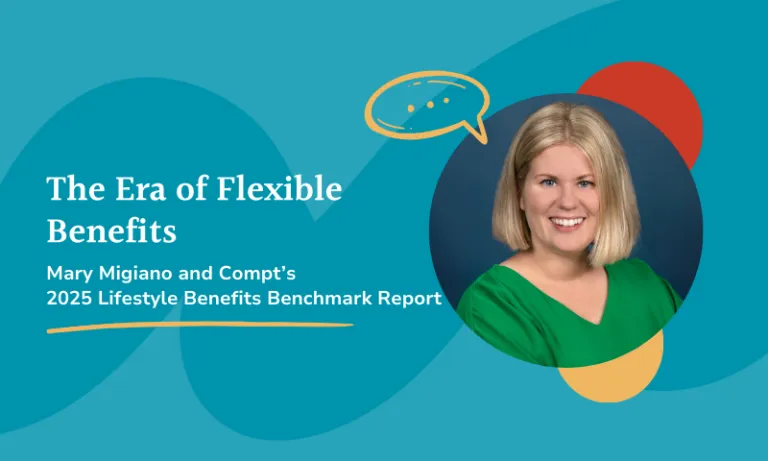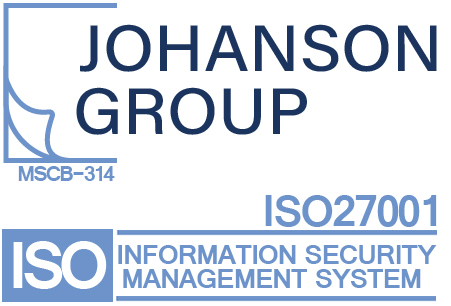I’ve worn many hats as a three-time CFO and as a COO managing finance/HR, which means I’ve been in charge of funding and finding employee benefits that would make everyone happy, including my teams and my people. But while putting in place benefits packages that make my team smile is great, the tax compliance nuances that come with that can be a very big headache, especially when dealing with the employee reimbursement side of benefits.
It’s something businesses can’t ignore: Noncompliance can lead to hefty fines, back taxes, interests, collections, and even jail time.
What is an Employee Reimbursement?
An employee reimbursement is an additional payment you make to your employees when they pay for an expense out of pocket. While the most obvious example are business expenses (e.g. hotel, transportation, per diem meal allowance, etc.), many businesses are now finding new ways to reimburse their employees for certain personal expenses as part of a competitive employee benefits package. These include:
- Gym memberships
- Phone bills
- Fertility benefits
- Health and wellness co-pays
- And so much more…
At Compt, this is what we’re excited to offer our clients through our lifestyle benefits platform that helps you accurately (and compliantly!) reimburse employees for taxable and non-taxable benefits. At last count, our users were reimbursed from over 70,000 vendors in 2023. So yes, the options are pretty endless.
Our software is designed to categorize and properly report benefits according to IRS guidelines to help businesses maintain compliance.
As I’ve noted, the consequences of noncompliance shouldn’t be taken lightly. It’s incredibly important to keep track of employee reimbursements and report them accurately on your taxes.
Are Employee Reimbursements Taxable?
The answer is… Sometimes.
Paying any sort of wage or income to your employee will always come with withholding or contributing taxes.
But for reimbursements, it’s a little different. While companies can put in place reimbursement policies dependant on the type of expense, many companies cover employees’ expenses through either an accountable plan or a non-accountable plan to fulfill IRS reporting requirements.
(You can find out more about your tax obligations as an employer in IRS Publication 15.)
In this guide, we’ll give you the rundown on how to report employee expenses, what is and isn’t taxable, and how to handle paperwork for employee reimbursements.
But first, a quick chart to help with this breakdown:

Accountable Plan vs. Non-Accountable Plan
Before we dive in, it’s important to note that for expenses to qualify for any of the non-taxable categories below, they must be reimbursed under an Accountable plan. Below, we’ve shared the IRS guidelines for an Accountable plan. If these requirements are not met, they are considered reimbursed under a non-accountable plan and therefore taxable income to the employee.
Accountable reimbursement plans
An accountable reimbursement plan is the most common option for employers. Accountable plans aren’t taxable, but for this to happen, according to the IRS, they have to meet the following guidelines:
- There is a clear correlation between the expenditure and the business activity in question. Employees must incur expenses while fulfilling their roles/duties within the company. The incurred costs should be directly related to their job functions.
- The employee substantiates these expenses with sufficient details. Employees need to make sure they include appropriate details, such as the date, location, amount spent, and specific business purpose of the expense, all meant to further verify the job-related expense.
- Reimbursements take place in a ‘reasonable amount of time.’ The IRS states the employee needs to document the expense within a 60-day timeframe following the expense. Employers have to reimburse employees within 30 days of receiving purchase documentation.
- Excess reimbursements are returned to the company within 120 days. For example, if an employee receives $100 for office provisions but spends only $80, the remaining $20 should be handed back to the company before the 120-day mark.
If expenses aren’t handled properly in this way, then the employer has to report reimbursable expenses in your employee’s W-2, which, as you can imagine, is an administrative nightmare.
FLSA and employee expense reimbursement
There are reimbursement exceptions that are worth noting. First of all, the Fair Labor Standards Act (FLSA) doesn’t require you to reimburse business expenses, as long as the employee’s wages or salary remain above the minimum wage threshold.
While the FLSA is a federal labor law, there are several state laws that do obligate employers to cover business-related costs an employee incurs. So you’ll have to ensure compliance at the state and federal level when managing accountable plan reimbursements.

The following states also require employers to compensate employees for expenses stemming from remote working conditions:
- California
- D.C.
- Illinois
- Iowa
- Massachusetts
- Montana
- New Hampshire
- New York
- North Dakota
- Pennsylvania
- South Dakota
- *Washington (Seattle only)
The exact law varies from state to state. Expenses under these laws include charges for internet connectivity, phone bills, and other remote work costs. While this maze can be difficult to navigate, that’s exactly why Compt has been built to be tax compliant, so these nuances can be handled within the Compt software.

What Employee Reimbursements Qualify as Business-Related Expenses?
Often, you’ll know exactly what your business-related expenses are — you can’t do business without them! It could be things like your office supplies, tools or machines needed to do the job, etc.
Generally speaking, business-related expenses are anything that employees need to do their jobs safely and effectively. And these business-related expenses have different rules when it comes to reimbursement.
Supplies
Common business-related expenses include:
- Office supplies
- Printing costs
- Tools and machines needed for the job
- Software licenses and subscriptions
- Safety equipment
As long as they’re reimbursed according to an accountable plan, business tools and supplies don’t count as taxable income.
Business travel expenses
Work-related travel expenses are reimbursable by the employer without impact to the employee’s taxable income, as long as they meet the criteria in IRS Publication 463.
Common expenses in this category include:
- Transportation (flights, car rentals, Uber/Lyft rides)
- Hotel and Airbnb stays
- Meals and incidentals (e.g., tips)
- Business entertainment costs
Many employers pay employees back for personal vehicle use for business travel. If you do, the IRS requires you to track mileage using the standard rate (67¢/mile in 2024).
Commuter expenses can also be provided as a pre-tax benefit. Employers can withhold up to the IRS limit ( $315 per month for 2024) for transportation expenses to/from work. Parking, transit passes, and commuter highway vehicle transportation are a few examples.
Company Vehicles
Companies can provide a company car, or they can provide an allowance to pay for a portion of your personal car’s use. These rules can get very cumbersome and unique to each situation. But in general, the portion of the vehicle used for business is reimbursable as nontaxable, and personal use of the vehicle would either not be reimbursed or considered a taxable fringe benefit to be added to the employees’ payroll.
IRS Publication 463 provides more detail into this topic.

What About Per Diem Reimbursements?
If the nature of your business requires some of your employees to travel regularly, it’s sometimes a better idea to give employees allowances at a per diem rate. This is a fixed amount of money you give to employees to cover their travel expenses.
Per diem payments can be an attractive alternative to lump-sum reimbursements since you don’t have to track all the individual expenses. The reimbursement has to cover multiple days and be based on the IRS’ per diem rate in your region. Anything over that rate is subject to payroll taxes.
Meals and entertainment costs
Meals that are reimbursed or provided by the employer must meet certain criteria in order to not be considered a taxable fringe benefit, such as the following:
- De Minimis meals are occasional meals provided to the employee of little value (taking into account how frequent they are provided) that accounting for it would be unreasonable. Coffee, doughnuts, occasional meals to enable employees to work overtime, or occasional parties or picnics for employees and their guests are some examples.
- Meals provided on the business premises and furnished for the Employer’s convenience.
- Meals directly related to business meetings.
The value of the meals that fit this criteria may be provided or reimbursed tax-free to the employee. However, there are additional stipulations on whether these amounts are subject to a 50% limit on the deduction for employers.
Professional development
When an employer pays for an employee’s professional development, the expenses are usually reimbursable if the training is required as part of maintaining your current salary, status, or job, or is needed to maintain or improve the skills in your current position.
Common expenses in this category are:
- Training and upskilling
- Courses
- Conferences
- Seminars
- Trade shows
- Professional fees (for memberships/consultations)
If these require the employee to travel, such as attending conferences or trade shows, the travel-related expenses are subject to the qualifications outlined in IRS Publication 463.These expenses cannot be part of a program of study that qualifies you for a new trade or business.
Education expenses that are part of a program that qualify you for a new trade or business can be reimbursed tax-free up to $5,250 through January 1, 2026, which applies to student loan reimbursements as well.
(Additional information regarding what qualifies under this program can be found here.)
Under Internal Revenue Code Section 127, employers are allowed to offer up to $5,250 per year in educational assistance to each employee without subjecting the employee to any tax implications.
Thanks to the 2020 CARES Act and Consolidated Appropriations Act, this allowance includes student loan repayments and tuition reimbursement. The $5,250 is a combined total for both, so employers need to keep track of how much they’re dishing out in each category.
Remote work costs
Remember when we talked about business expenses being an expense occurring as a result of, well, doing your job? This can include certain remote work expenses.
Remote work expense examples include:
- Internet connection and data costs
- Cell phone bills/cell phone stipends
- Home office supplies
Employers may reimburse employees for the business use portion of otherwise personal expenses and then exclude this amount from the employee’s taxable income. Of note, employers need to make these expenses are documented properly, and assess expenses in a fair and logical way.
If you do business or hire employees in Seattle, D.C., or one of the 11 states listed under the FSLA section above, double-check your local regulations to ensure compliant reimbursements.
Home office equipment that is required to set up your working environment at home can be considered a business expense and therefore is a non-taxable reimbursement for the employee.
However, be sure that the equipment stipends designate these items as company property for use in the business only.
What Doesn’t Qualify as a Business Expense?
Certain expenses or benefits that don’t fall into the above categories are subject to payroll taxes and need to be reported on the employee’s W-2.
Stipend reimbursements
Perk stipends are the ideal way to show your employees much-deserved appreciation and incentivize loyalty. Stipend reimbursements include:
These are fixed amounts you pay employees that help to offset some of the overall cost of the item/service. These can be given as monthly/quarterly/annual allowances through payroll or as one-off payments. If they are not specifically carved out under IRS Pub 15b , they are considered taxable fringe benefits and should be included in payroll as such. .
Gifts and bonuses
Gifts (including gift cards), bonus payments, and spot bonuses made to employees are also subject to payroll taxes. Typically, the event surrounding the gift or bonus doesn’t matter, whether that’s for the holidays, special occasions, or as a simple act of employee recognition.
There are some exceptions. De minimis gifts, any property or service you provide to an employee that has so little value (taking into account how frequently you provide similar benefits to your employees) that accounting for it would be unreasonable or administratively impracticable, can be excluded from income.
However, note that cash and cash equivalent fringe benefits (for example, gift certificates, gift cards, and the use of a charge card or credit card), no matter how little, are never excludable as a de minimis benefit.
In addition, services awards can be excluded from income if they follow the specific criteria below.
- the value of up to $400
- The gift must be “tangible personal property,” which excludes cash or cash equivalents, securities, vacations, lodging, meals, tickets to theatres or sporting events.
- The award must be presented as part of a “meaningful presentation.” The presentation does not have to be elaborate, but emphasis must be put on the employee’s achievement.
- The award must be presented under conditions that do not create “disguised compensation.”
- Length-of-service awards must not be presented to employees for less than five years of service.
- The employee may not receive another length-of-service award (other than one of very small value) during the same year or have received an award in any of the prior four years.
Employee Medical Expenses and Employee Reimbursements
Medical expenses are an interesting case. Most employers offer an employer-sponsored health insurance plan, but medical expense reimbursement plans (MERPs) are another way to go about this.
Health reimbursement arrangements (HRAs) are the most common type of MERP.
There are a few types of HRAs, each with their own exceptions:
- Qualified small employer HRA (QSEHRA) — a tax-free reimbursement program that allows small employers (fewer than 50 employees) to provide monthly or annual allowances for eligible employees to cover insurance premiums and IRS-approved expenses, without offering a group health plan.
- Individual Coverage HRA (ICHRA) — a more flexible option for employers, they can be used by any size company with no contribution limits. Employees can be reimbursed tax-free for individual health insurance coverage based on their job classification.
- Group Coverage HRAs (GCHRAs) — also known as integrated HRAs, these allow employers to reimburse employees on a group health insurance plan for expenses not fully covered by their plan.
It’s important to distinguish health stipends from MERPs. Health stipends are taxable because employees can spend them on whatever they want, whereas MERPs only allow employees to spend the money on eligible medical expenses outlined by the IRS.
Losing sleep over tax compliance? Use Compt for your employee reimbursements instead.
Head spinning yet? We don’t doubt it. Here’s the thing: It’s a lot easier to use stipend and reimbursement software than it is to handle employee reimbursements manually. Which is why we do it for you.
Compt’s platform makes it easy to handle all this tax compliance stuff, so there are no more spreadsheets or manual tracking offline. It also makes tracking individual receipts and generating comprehensive reports easy.
And, since our platform works with payroll systems like ADP and Rippling, you don’t have to worry about manually updating payroll records, either.
Editor’s Note: Compt software supports the categorization and proper reporting of benefits according to IRS guidelines, helping businesses maintain compliance. However, Compt cannot provide tax advice, and users should consult their own tax, legal, and accounting advisors when necessary.






